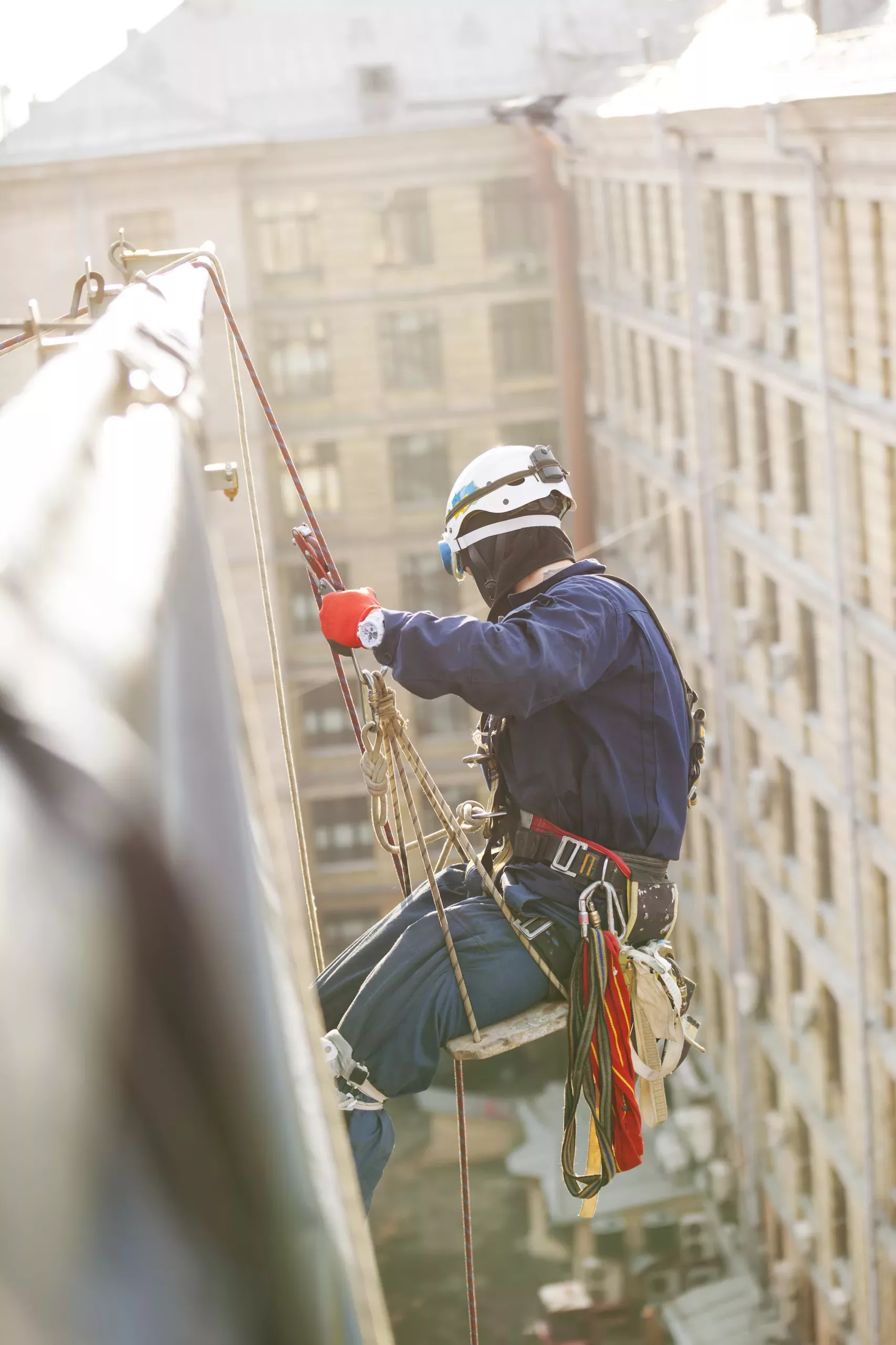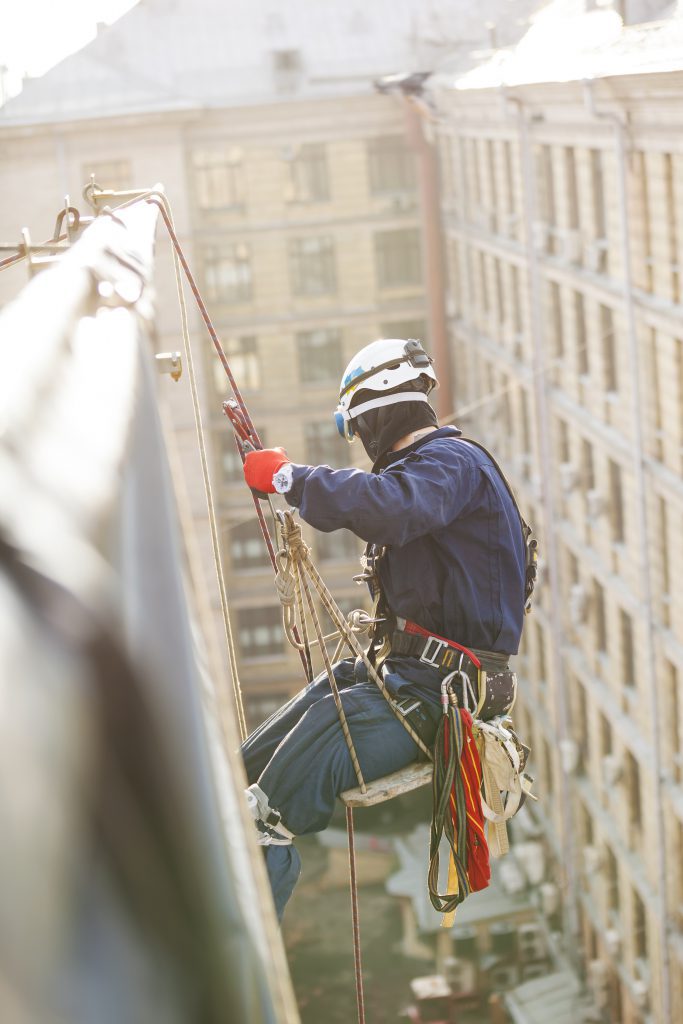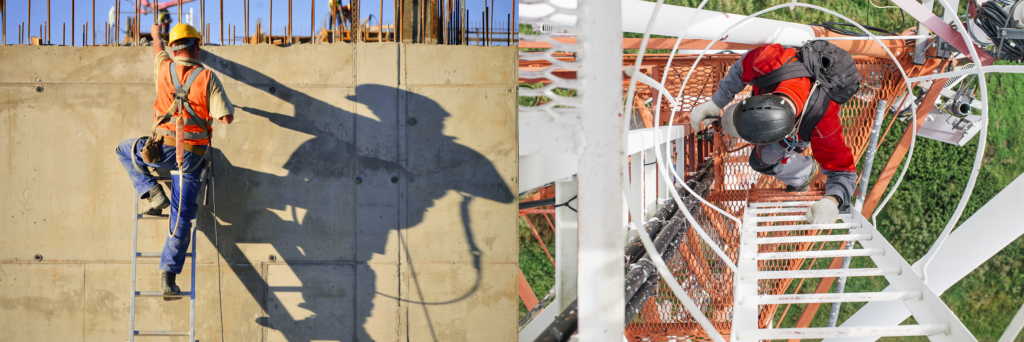
OSHA Final Rule: Walking-Working Surfaces and Personal Fall Protection Systems

Written by: Joe Mangiardi, NES, Inc.

Workers such as the one pictured here will be directly affected by the revised OSHA regulations governing the use of personal fall protection systems.
New OSHA Regulations on Walking-Working Surfaces and Personal Fall Protection
The Occupational Safety and Health Administration (OSHA) has recently published a final rule revising and updating the standards on walking-working surfaces and fall protection systems. These walking-working surfaces include, but are not limited to: floors, ladders, stairways, roofs, scaffolds, or any other elevated work surfaces or walkways. The aim of the new rule is to prevent or reduce general industry slips, trips, and falls, as well as other injuries and fatalities historically resulting from various walking-working surface hazards.
Effective January 17, 2017, the new rule updates the existing standards originally adopted in 1971. In this long-overdue improvement to existing policy, OSHA has drawn from decades of data gathered from university studies and agencies such as the National Institute for Occupational Safety and Health (NIOSH), the National Institute of Standards and Technology (NIST), the Bureau of Labor Statistics (BLS), the American National Standards Institute (ANSI), the American Society of Testing and Materials (ASTM), and the American Society of Mechanical Engineers (ASME). In particular, national consensus standards from NIOSH, ANSI, ASTM, and ASME were analyzed and implemented into the rule.
It is estimated by OSHA that the final standards will affect 6.9 million general industry businesses and 112.3 million employees. OSHA also estimates that, among those workers within the purview of the final rule, falls from heights and working surfaces account for an annual average of 202,066 serious (lost-workday) injuries and 345 fatalities. OSHA anticipates that adoption of the new standard will prevent 29 fatalities and 5,842 lost-workday injuries per year, the result of which being $614.5 million in gross annual monetized benefits, equating to $309.5 million in net benefits (after subtracting associated costs).
 Window washers (left) and roofers (right) will also be among those affected by the revised OSHA walking-working and personal fall protection systems regulations.
Window washers (left) and roofers (right) will also be among those affected by the revised OSHA walking-working and personal fall protection systems regulations.
Standard Applies Construction and Agriculture Rules to General Industry
The rule does not change existing construction or agricultural standards; rather, it seeks to incorporate many successful regulations from those areas, as well as various technological advances and proven best practices methods from all industries, into the scope of OSHA general industry safety requirements. As a result, employers ranging from utilities to warehouses to retailers, and a wide variety of other general industry businesses, will now function under the same regulations as those in the construction and agriculture industries. Notably, the new rule departs from the antiquated general industry standards governing the use of scaffolding in favor of OSHA’s more effective construction scaffold standards. A main advantage from these changes is that businesses whose operations include construction and/or agriculture, but which extend to other industries as well, will see their efforts to stay in compliance consolidated, simplified, and ultimately rendered less costly.
Employers Now Decide on Fall Protection
OSHA phrases fall protection as, “any equipment, device, or system that prevents a worker from falling from an elevation or mitigates the effect of such a fall.” Existing regulations have been modified in a way that removes employers’ obligations to conform to certain safety system requirements that may, in actual practice, present undue and often more dangerous logistical issues. Employers may now choose fall protection safety options that make the most sense for the particular job and setting encountered. The final rule stipulates that employers are to select from the following fall protection system options: guardrail, safety net, personal fall arrest, positioning, travel restraint, or ladder safety (to view more information about these options, as well as a schedule of timelines for compliance following the rule’s release, view the corresponding OSHA Fact Sheet).
 Employers may now assess immediate work conditions and select the personal fall protection system deemed to be most appropriate.
Employers may now assess immediate work conditions and select the personal fall protection system deemed to be most appropriate.
Safety Equipment and Training
A major component of the rule is its emphasis on the proper inspection and use of safety equipment. The rule officially codifies the use of rope descent systems (RDSs), which are utilized to provide such services as window washing and building maintenance. Additionally, the rule places certain safety restrictions on the use of fixed and portable ladders.
So that safety equipment is adequately maintained and safely operated, the rule requires that employers ensure their employees are trained appropriately for the tasks they are to be performing. This training must cover the identification and mitigation of fall hazards, the use of personal fall protection systems and RDSs, and how to correctly maintain, inspect, and store fall protection equipment. Workers must be retrained when workplace operations and/or equipment are changed and whenever the employer feels such training would be beneficial. This training must be obtained within six months of the publication date of the final rule (i.e., by mid-2017). As with all training, employees must be instructed in a language they understand and at a linguistic level they are able to comprehend.
With regard to Cal/OSHA, the long-standing requirement is that states operating OSHA-approved state plans must adopt rules and regulations that meet or exceed federal OSHA standards. Following the new rule, Cal/OSHA would be required to modify its policies in line with federal OSHA standards. It will be necessary to monitor Cal/OSHA carefully in the coming months and years to keep apprised of relevant developments.
For information about our Environmental Health & Safety training and consulting capabilities, contact NES at 916-353-2360 / 1.800.NES.ADVISE (1.800.637.2384) or office@nesglobal.net.
References:
OSHA Final Rule Official Document
OSHA Article: Final Rule to Update General Industry Walking-Working Surfaces and Fall Protection Standards
